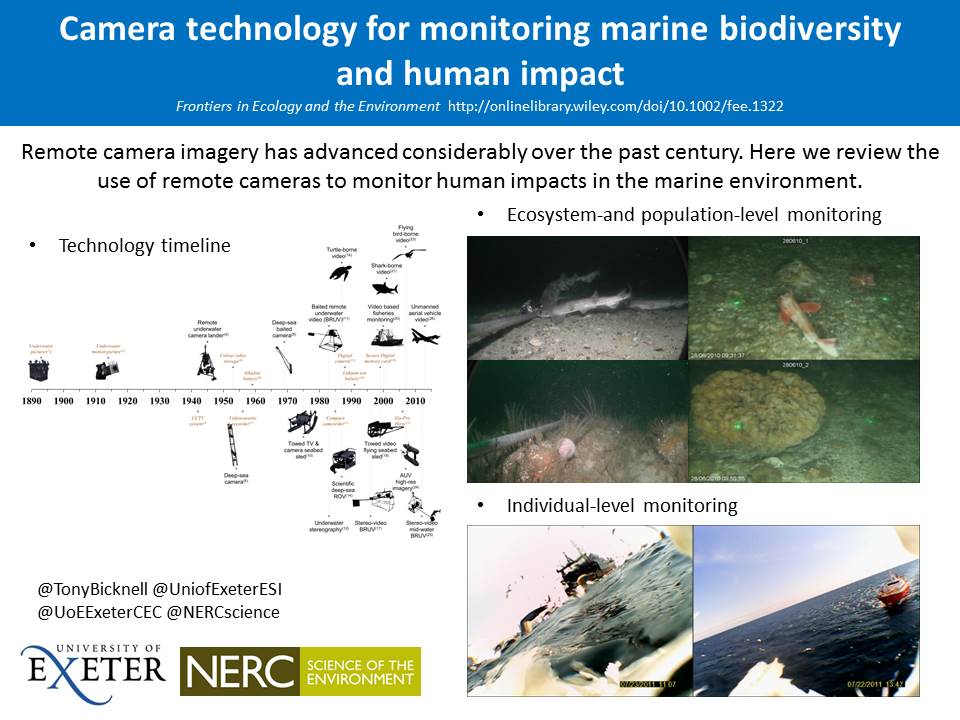Getting the picture – cameras, marine biodiversity and human impact
By Anthony Bicknell, Associate Research Fellow at the Environment and Sustainability Institute, University of Exeter, UK.
We have all been captivated by the television wildlife documentaries that provide breath-taking video images of the previously unseen marine world. Although these may rely on the expertise of an experienced camera operator, camera technology has advanced to such an extent over recent years that even the most inexperienced operator (a seabird, for example) can provide stunning video and photos. As human activities in the marine environment increase it is important we understand how this might be impacting animals and habitats, and cameras are now playing an essential role in helping toward this goal.
From ecosystems to individual animals, remote camera imagery is being used to reveal the effects we are having and helping scientists to understand how best to sustainably manage the marine environment. Our article in the October 2016 issue of Frontiers in Ecology and the Environment looks at how remote cameras are being used to address important issues relating to human activity in marine ecosystems and how rapid technological development has stimulated new applications in this field.
We discuss how increased accessibility to high-quality marine cameras may influence future use, the ethical considerations, and the challenges we much overcome when working in this extreme environment. The opportunities for the use of camera imagery are many, but they are only one part of the jigsaw as we try to understand our impacts on the marine environment, although an exciting and visually stimulating one.
View online baited underwater video footage
Conger eel and nursehound (greater spotted catshark)
https://www.youtube.com/watch?v=6yMgun4LsTA
Octopus
https://www.youtube.com/watch?v=CVP37yqXF4Y
Haddock, gurnard, lesser spotted catshark
https://www.youtube.com/watch?v=8tnMuC0RDyw
Tope (UK shark species)
https://www.youtube.com/watch?v=0fCtbYMNWK8
Further Reading
Bicknell A et al. (2016) Camera technology for monitoring marine biodiversity and human impact. Front Ecol Environ 14(8):424–432, doi:10.1002/fee.1322

